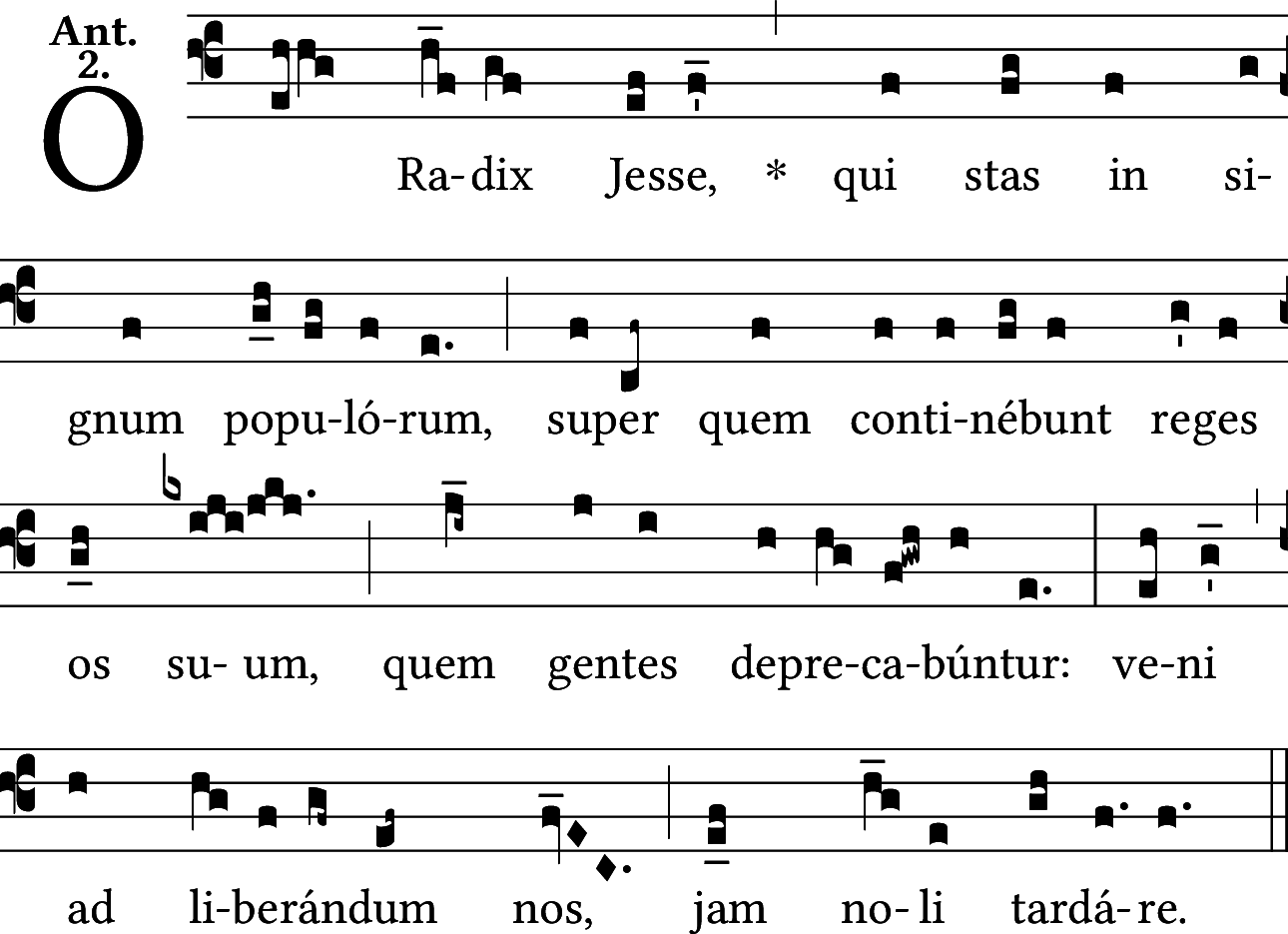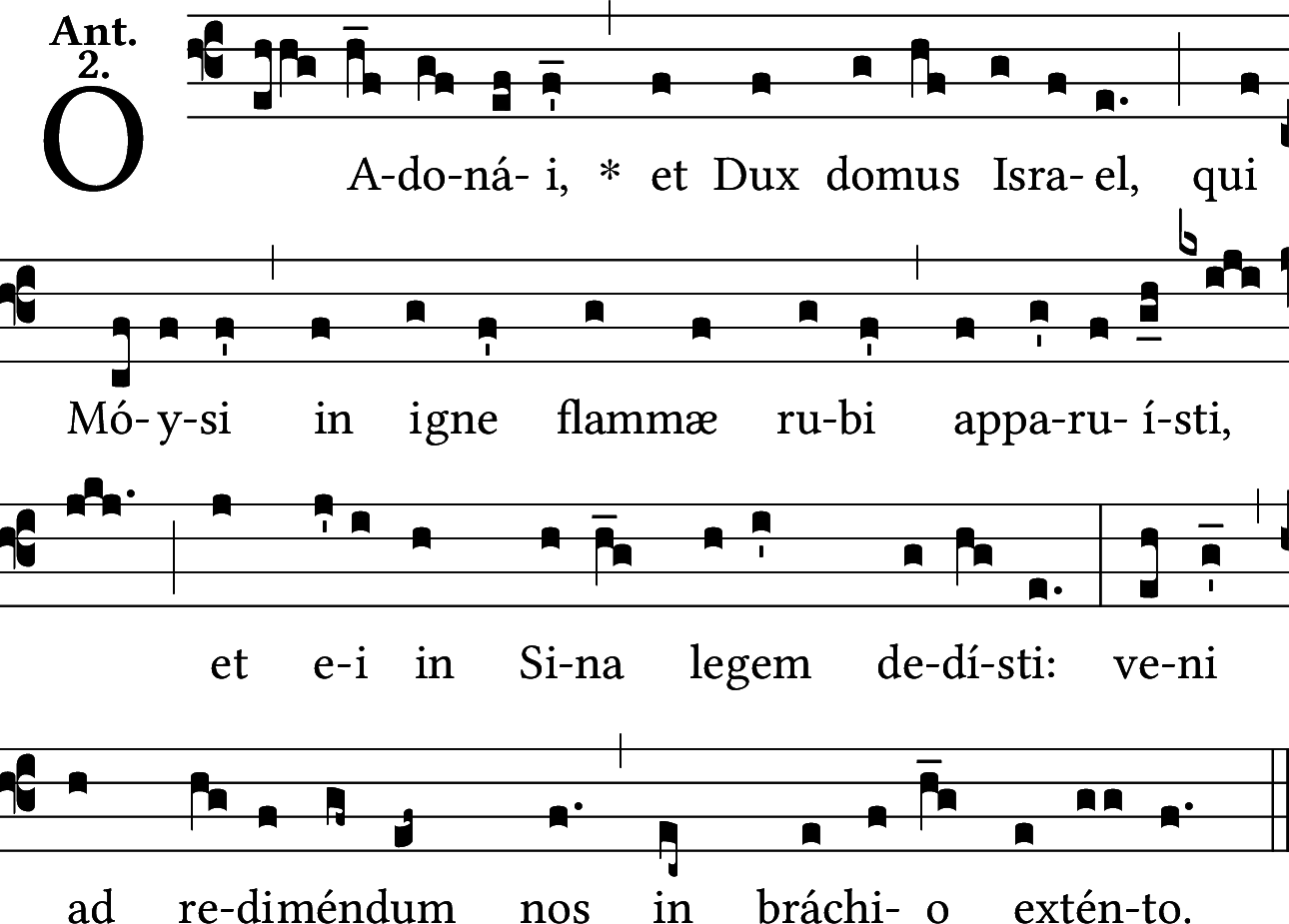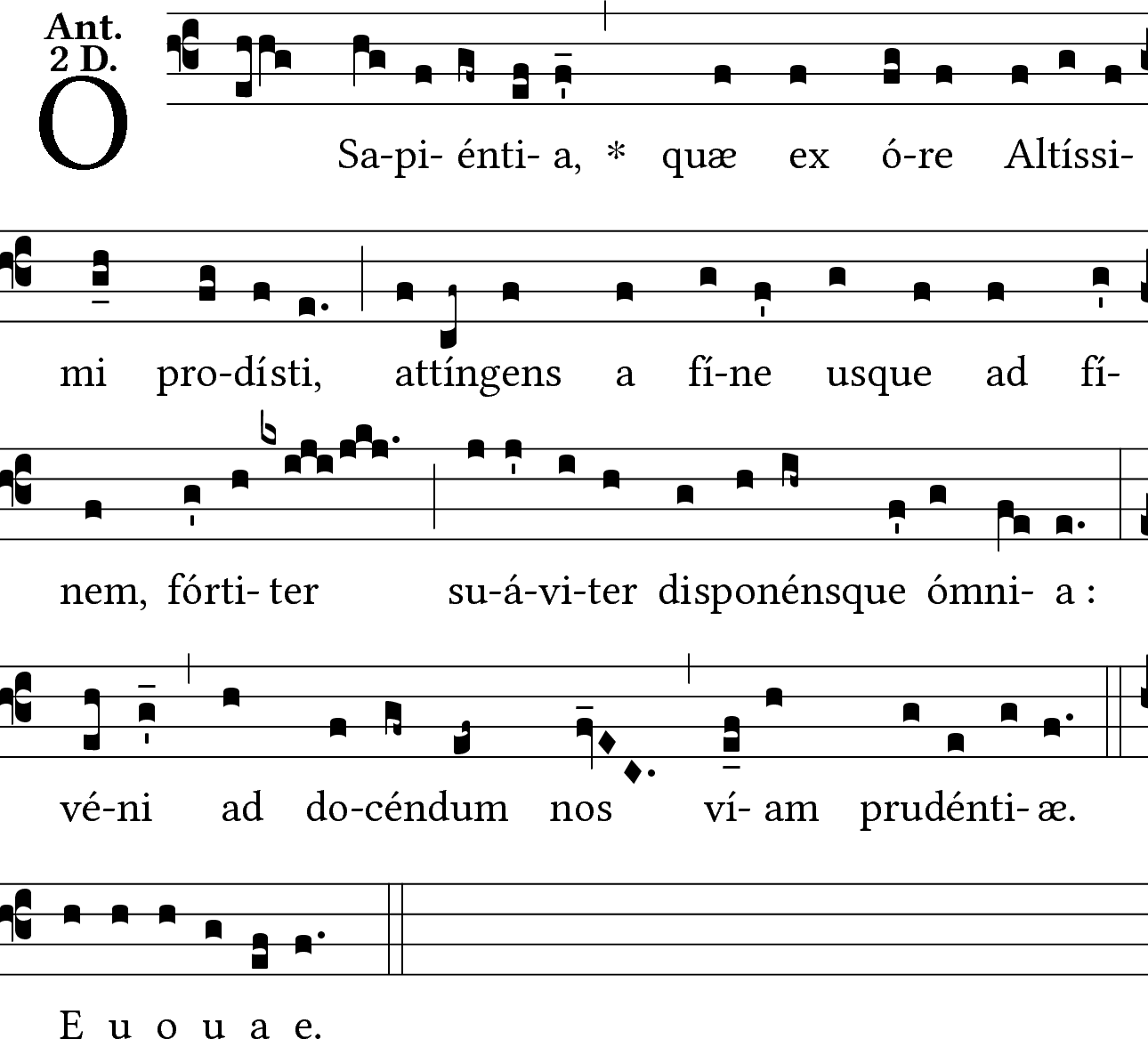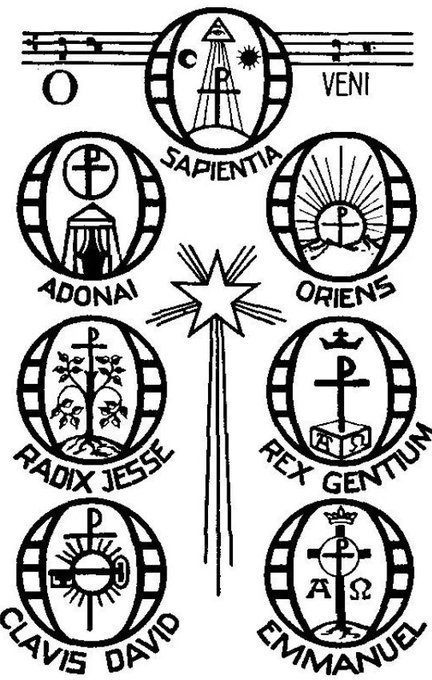
(Image by GregoBase)
Auxilia ad Missam in forma ordinaria celebrandam secundum Œcumenicum Concilium Vaticanum II

(Image by GregoBase)

(Image by GregoBase)
Ant. ad introitum Is 45, 8
Roráte, cæli, désuper, et nubes pluant iustum;
aperiátur terra et gérminet Salvatórem.
Non dicitur Glória in excélsis.
Collecta
Grátiam tuam, quǽsumus, Dómine,
méntibus nostris infúnde, ut qui, Angelo nuntiánte,
Christi Fílii tui incarnatiónem cognóvimus,
per passiónem eius et crucem
ad resurrectiónis glóriam perducámur.
Per Dóminum.
Dicitur Credo.
Super oblata
Altári tuo, Dómine, superpósita múnera
Spíritus ille sanctíficet,
qui beátæ Maríæ víscera sua virtúte replévit.
Per Christum.
Ant. ad communionem Is 7, 14
Ecce Virgo concípiet, et páriet fílium;
et vocábitur nomen eius Emmánuel.
Post communionem
Sumpto pígnore redemptiónis ætérnæ,
quǽsumus, omnípotens Deus,
ut quanto magis dies salutíferæ festivitátis accédit,
tanto devótius proficiámus
ad Fílii tui digne nativitátis mystérium celebrándum.
Qui vivit et regnat in sǽcula sæculórum.
Adhiberi potest formula benedictionis sollemnis.
© Copyright – Libreria Editrice Vaticana
Messalino in PDF con letture in lingua italiana (da stampare su fogli A3 fronte/retro)
Missalette in PDF with readings in English (to be printed on A3 sheets, front/back)

(Image by GregoBase)
Peter Kwasniewski:
The error that led to the abolition of Latin was neoscholastic and Cartesian in nature—namely, the belief that the content of the Catholic Faith is not embodied or incarnate but somehow abstracted from matter. Thus, many Catholics think that Tradition means only some conceptual content that is passed down, irrespective of the way in which it is passed down. But this is not true. Latin is itself one of the things passed down, together with the content of all that is written or chanted in Latin. Moreover, the Church herself has recognized this point on a number of occasions in singling out Latin for special praise and recognizing in it an efficacious sign of the unity, catholicity, antiquity, and permanence of the Latin Church.
Latin thus possesses a quasi-sacramental function: just as Gregorian chant is “the musical icon of Roman Catholicism” (Joseph Swain), so is Latin its “linguistic icon.”
Full article here.
Artículo completo en Español aquí.
Peter Kwasniewski:
El error que condujo a la eliminación del latín fue de naturaleza neoescolástica y cartesiana: se creyó que el contenido de la Fe católica no estaba encarnado, sino que era algo abstraído de la materia. Por eso, muchos católicos piensan que la Tradición no es más que cierto contenido conceptual que se transmite de generación en generación, y que la manera en que se transmita es lo de menos. Pero no es así. El propio latín es uno de los bienes transmitidos, junto con el contenido de lo que se escribe o canta en dicha lengua. No sólo eso; la propia Iglesia lo ha reconocido en numerosas ocasiones al escoger el latín para alabar a Dios con solemnidad y al reconocerlo como signo eficaz de la unidad, catolicidad, antigüedad y permanencia de la Iglesia latina.
Por tanto, el latín posee una función casi sacramental: así como el canto gregoriano es «el icono musical del catolicismo romano», como lo llamó Joseph Swain, el latín es su icono lingüístico.
Artículo completo aquí.
Full article in English here.

Bishop Strickland’s tweet on Saturday, December 15:
Ways to receive Our Lord as King of the Universe… read and reflect on the Sunday Scriptures, plan your whole weekend around receiving your King, wear your best garments, spend time in quiet, kneel to receive Him, receive Him on the tongue, offer silent time of thanks after mass.
(Reported by Brian Williams here)

(Image by GregoBase)